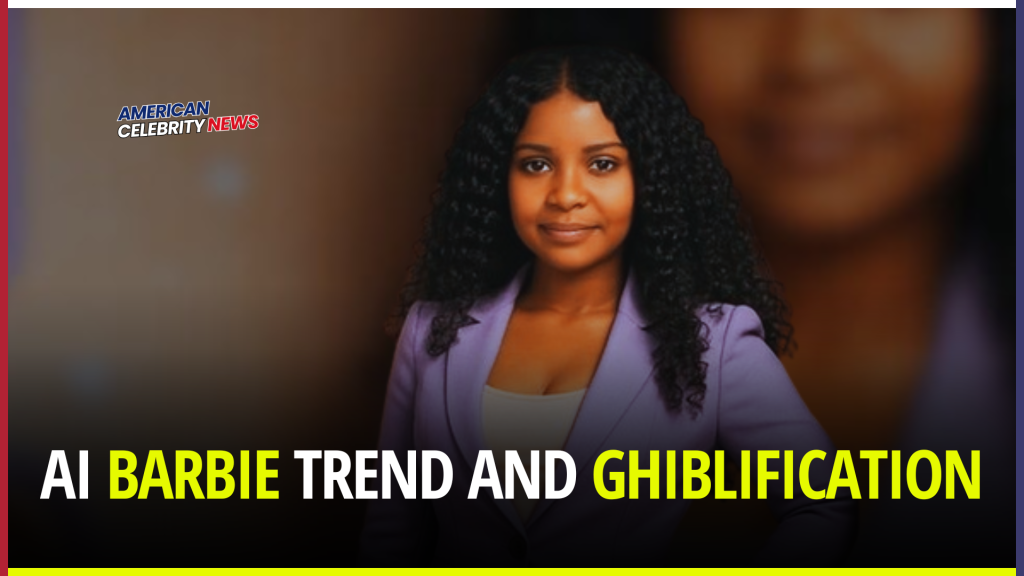The Rise of the AI Barbie Trend and Ghiblification: A Creative Revolution
In an era where artificial intelligence blurs the lines between imagination and reality, a new cultural phenomenon is sweeping the internet: the AI Barbie trend. Coupled with “Ghiblification” the transformation of images into Studio Ghibli-inspired art—this trend highlights how tools like ChatGPT’s image generator are revolutionizing digital creativity. But as millions flock to these platforms, questions about ethics, infrastructure strain, and the future of art are taking center stage.
What is the AI Barbie Trend?
The AI Barbie trend allows users to upload photos and transform themselves into Barbie or Ken dolls using AI tools like ChatGPT’s image generator. Inspired by the blockbuster Barbie movie, this trend merges nostalgia with cutting-edge technology, enabling hyper-stylized, plastic-perfect avatars. Social media platforms like TikTok and Instagram are flooded with users showcasing their AI-generated doll personas, often tagged with #AIBarbie.
READ MORE FROM AMERICAN CELEBRITY NEWS: CBS Cancels Two Fan-Favorite Series: Inside the Shocking Decisions and Industry Shifts
Lorde Teases New Music: Decoding the Snippet and Anticipating Her Next Era
The process is simple: users input prompts like “Barbiecore aesthetic” or “plastic doll filter” into ChatGPT, which generates images with oversized eyes, glossy hair, and vibrant outfits. However, the trend’s popularity has exposed limitations in AI’s understanding of cultural nuance, occasionally producing uncanny or stereotypical results.
CBS Cancels Two Fan-Favorite Series: Inside the Shocking Decisions and Industry Shifts
Ghiblification: Bringing Anime Magic to AI Art
Parallel to the AI Barbie trend is “Ghiblification,” where users reimagine themselves as characters from Studio Ghibli’s beloved films like Spirited Away or My Neighbor Totoro. This trend emphasizes soft, hand-drawn textures and whimsical backgrounds, showcasing AI’s ability to emulate distinct artistic styles.
ChatGPT’s image generator analyzes thousands of Ghibli frames to replicate the studio’s signature watercolor aesthetics and ethereal lighting. Yet, artists argue that while AI mimics style, it struggles to capture the emotional depth inherent in human-crafted animation.

The Technical Pressure on OpenAI
The viral success of the AI Barbie trend and Ghiblification has placed unprecedented demand on OpenAI’s infrastructure. Reports indicate a 300% surge in ChatGPT image generation requests, leading to server slowdowns and delayed outputs. Experts suggest that processing millions of high-resolution images requires immense computational power, testing the limits of current AI systems.
OpenAI has responded by optimizing its algorithms and expanding server capacity, but the strain highlights broader challenges in scaling AI for mass creativity.
Ethical Debates: Creativity vs. Conformity
While the AI Barbie trend celebrates accessibility, critics warn of perpetuating unrealistic beauty standards. AI-generated Barbies often reinforce narrow Eurocentric features, sidelining diverse representations. Similarly, Ghiblification risks homogenizing art styles, reducing cultural narratives to algorithmic patterns.
Ethicists emphasize the need for inclusive training data and user-controlled customization to avoid bias. UNESCO’s recent guidelines on AI ethics stress transparency in datasets to ensure technologies respect cultural diversity.
The Future of AI-Generated Art
The AI Barbie trend is just the beginning. As tools evolve, users could soon create animated avatars or immersive 3D worlds. However, this raises questions about intellectual property, especially as AI blends copyrighted styles like Barbie or Ghibli.
OpenAI is reportedly developing watermarking systems to distinguish AI art, while legislators debate regulations to protect original creators.
Conclusion
The AI Barbie trend and Ghiblification exemplify AI’s transformative potential in democratizing art. Yet, they also underscore the need for ethical frameworks and technical innovation. As OpenAI navigates these challenges, one thing is clear: the fusion of AI and creativity is reshaping how we imagine ourselves—one pixel at a time.


